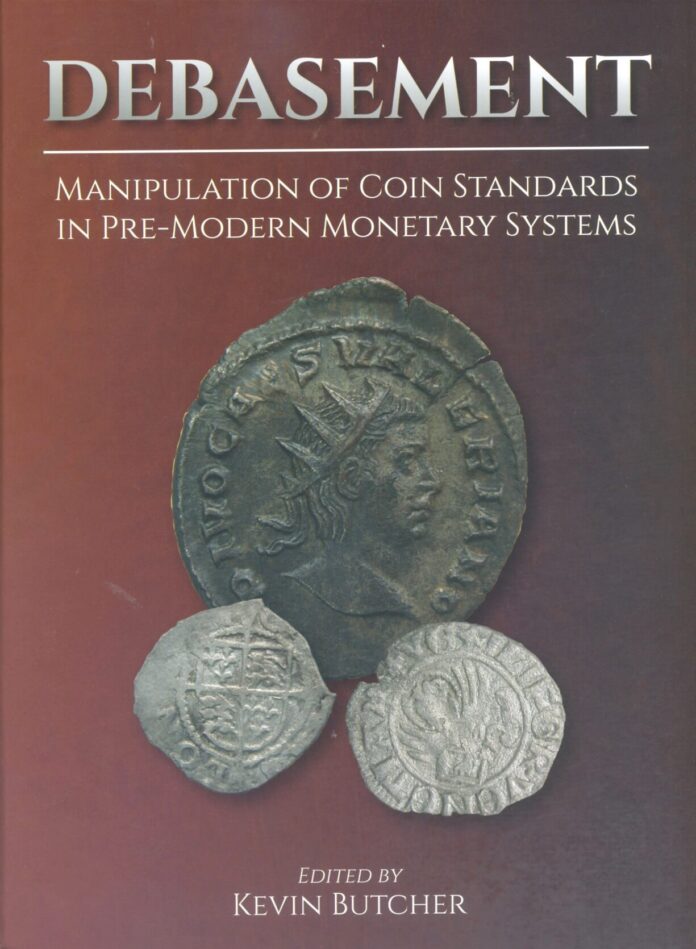
There’s this wonderful difference between the face value and the intrinsic value of a coin, which has been used for centuries by governments to fund part of their national budget. Nowadays, we only realise how much the money supply is rising because of falling interest rates and climbing prices of investment products, however, until the beginning of the 20th century, coin users were still able to observe how their coins became lighter and lighter while their fineness decreased constantly. A colloquium that took place in the March of 2017 at the University of Warwick discussed the debasement of coins. The focal point was on ancient times, but issues of the Middle Ages were used to examine the phenomenon thoroughly.
Some Theory to Start With
If you’ve ever dealt with coins of barracks emperors, you’re perfectly familiar with the phenomenon of the constantly shrinking degree of silver fineness. The reason seems to be found quite quickly: there were increasing costs, falling state revenues, a financial deficit regarding the troops and emperors who tried to compensate for this by means of light coins. But is this the explanation for every coin debasement of the past?
From historical times we know that the fineness of coins was often adjusted to prevent the money from disappearing from circulation. Good old Gresham’s law forced all those who preferred to mint heavier coins to adapt to their neighbours if they didn’t want to risk that their coins would not be used to pay but be melted down instead.
If you study Greek or medieval coinage, you come across a similar culture of competition between different monetary systems. Thus, the purpose of the colloquium held in Warwick in 2017 was to summarise, to discuss and to be inspired by the various approaches to explain the debasement of coinage. After all, many measures may not have been adopted only for obvious reasons but also for reasons that might be less obvious to us today.
Just as I begin this review with a bit of theory, the conference proceedings start with an introduction by editor Kevin Butcher and two fundamental theoretical essays (by Matthew Ponting and Martin Allen) as well as two examples for this, namely the debasement of gold coins from the Roman Republic and the early Empire (Arnaud Suspène, Dorian Bocciarelli, Maryse Blet-Lemarquand and Benjamin Gehres) and the example of Egypt (Colin P. Eliott).
Metal and Coin Production
Four additional contributions deal with the base of all precious metal coins, with gold, silver and the alloys composed to produce the planchets. Therefore, the book is not only of interest to those who are dealing with the debasement of coins, but also to those interested in coin production.
Nicola George is an experimental archaeologist and reports about attempts to re-produce the blanks used to mint the coins of Roman barracks emperors. Thomas Faucher and Julien Olivier write about silver and the composition used in Egypt to produce coins between the fifth and the first century BC. Very useful is the compilation by Alfred M. Hirt, who lists on a few pages in which provinces of the Roman Empire gold and silver mining took place. And I’ve been waiting for a long time for an essay like that written by Bernhard Woytek, who summarises everything we know about the work and organisation of minting establishments (during the Principate).
Case Studies
The third part of the book deals with case studies from the Severan dynasty (Nathan Murphy), the era of Diocletian (Gilles Bransbourg), early medieval times (Rory Naismith), and British high Middle Ages (Nick Mayhew).
All in all, this anthology offers plenty of food for thought to anyone interested in the phenomenon of state-run coin production. Even though the book is supposed to “only” address the issue of debasement, behind this phenomenon there is always an authority that exerts major influence on the market by means of its money.
Debasement can be acquired at the Oxbow website. Please order it directly from the publishing house and support in these difficult times those who ensure that not only bestsellers but also scholarly books are being printed!


